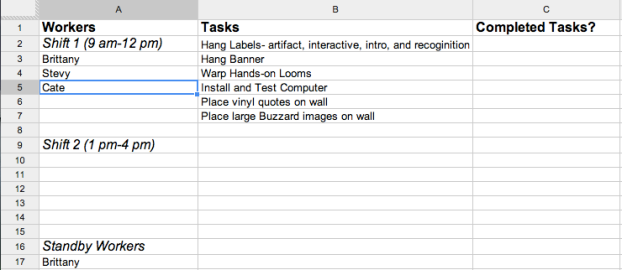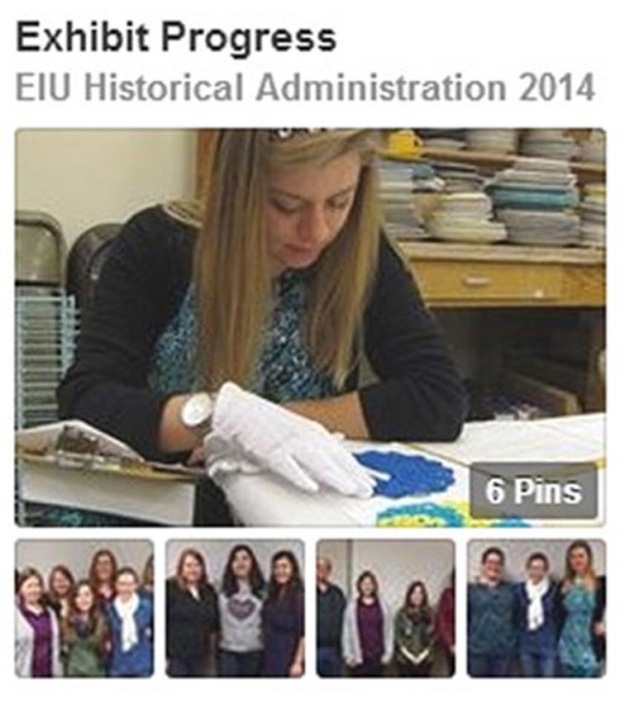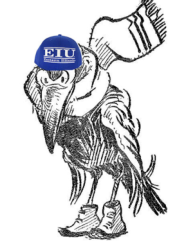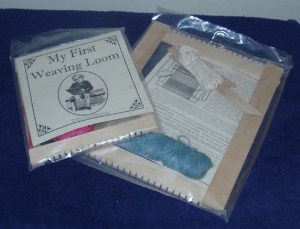“Text and Textiles: Crafting the Lives of Guy & Irene Buzzard” opened last week, so it seems fitting to look back at Installation Week. The Historic Administration Program staff strove to create a balance between theoretical and practical experiences when they designed the curriculum. Installation Week provided the opportunity to mix the two in a real world exhibit.
We walked into the Tarble Art Center, and viewed the eGallery, a.k.a. the empty white cube. We had one work week to transform the space into a professional, meaningful exhibit before our audience arrived, including the son and grandson of Guy & Irene Buzzard.
Two particularly time-consuming tasks confronted our class: building walls and installing vinyl lettering. Framing wall units was a new experience for most of the group, but within twenty minutes of arrival, the entire class jumped into the task, crawling on the floor, arranging timbers and predrilling holes. Everything proceeded smoothly until all of the cordless drill batteries ran out at the same time. Exhibit Lesson One: no matter how carefully one plans ahead, the exhibit gremlins interject their own complications. All in all, the walls took the better part of three days to frame out, cover with sheet rock, apply the mud, sand, and paint.
Installing vinyl lettering posed the other major challenge of the week. Brittany was familiar with this process, but it was new to the rest of us. After an instructional session with Brittany and Mike S., we set to work marking the walls, and placing the lettering. For those unfamiliar with vinyl lettering, it is the same material applied to trucks and cars, only with weaker adhesive. The process includes firmly rubbing the lettering with a rubber blade and peeling the backing off, setting in the label in place on the wall, then repeating the rubbing and peeling steps until the lettering adheres to the wall properly. The process may be slow, but the results are clean and professional.
The rest of the work went quickly, in comparison. The installation of artifacts, setting up the hands-on activities, pointing lighting units and hanging labels kept us busy for the rest of the week. By the end of the day on Thursday, the exhibit was ready to open. That is, until Mike S. noticed a single typographical error on a label. It was minor, but needed to be fixed. Bev in Media Services printed a new label overnight, and it was installed at 2:02pm. Even with this last minute replacement, the HA class completed the project with time to spare.
“Text and Textiles: Crafting the Lives of Guy & Irene Buzzard” will be on exhibit in the Tarble Art Center at Eastern Illinois University until June 27, 2014.



















